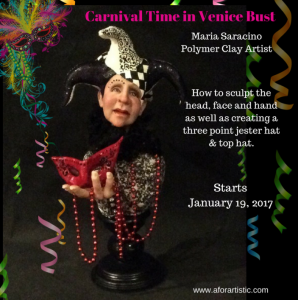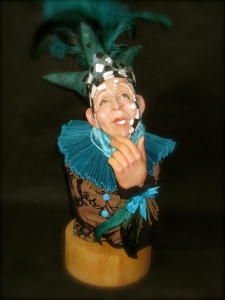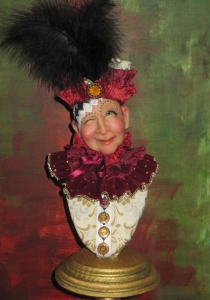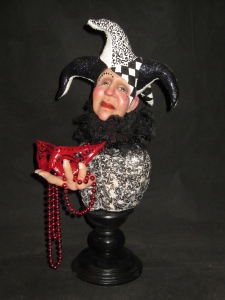January and February can feel long, cold and boring, especially for those of us who live in the colder climates. That's why Carnival season is such a welcome celebration to break up the winter doldrums in northern climates and such an exciting time of year in warmer climates. I've channelled this theme in several of my sculptures and it's now one of the courses I offer in my in-studio and online workshops. You can find out more on my website at www.saracinocollection.com under "Open Classes", or for the online version through www.aforartistic.com
Whenever we hear the word “Carnival” a few celebrations that come to mind include Rio de Janeiro, music and people dancing in colorful costumes and headpieces, or maybe Renaissance-themed dresses, powdered wigs and masks at the Venetian carnival. New Orleans famous Mardi-Gras is celebrated across North America. In Canada we have "Carnaval de Quebec" from January 27-February 12 and right here in the country's capital we have "Winterlude" from February 3-20th.
But have you ever stopped to wonder, where does this celebration come from? Or, why do we celebrate it in the early months of the year? Here are a few fun facts to help you understand this celebration better!
- Available at www.saracinocollection.com
Carnival season occurs before Lent and is traditionally held in areas with a large Catholic population. Lent is the six weeks directly before Easter and is marked by fasting, pious or penitential practices. Traditionally during Lent, no parties or other celebrations were held, and people refrained from eating rich foods, such as meat, dairy, fats and sugar. In the days before Lent, all rich food and drink had to be disposed of, so people threw a big party with the whole community to finish all of it. The celebration combined elements of a circus, a public street party and of course, masks. Some of the best-known traditions, including carnival parades and masquerade balls were first recorded in medieval Italy. The Carnival of Venice was, for a long time, the most famous carnival and considered to be the origin of Carnival.
From Italy, Carnival traditions spread to the Catholic nations of Spain, Portugal, and France. From France it spread to New France in North America. From Spain and Portugal it spread with Catholic colonization to the Caribbean and Latin America. (excerpts from latintimes.com)
The exact origin of the name "Carnival" is disputed, but some state that the word comes from the Late Latin expression carne vale, which means "farewell to meat," signifying that those were the last days when one could eat meat before the fasting of Lent. The word carne may also be translated as flesh, so suggesting carne vale as "a farewell to the flesh," a phrase actually embraced by certain Carnival celebrants who encourage letting go of your former self and embracing the carefree nature of the festival. The last day of Carnival is "Mardi Gras"
 The six weeks of Lent in 2017 starts on March 1st. So between now and then is the time to celebrate "CARNEVALE"! And if you are feeling creative, sign up for my open in-studio workshop or the online class at www.aforartistic.com
The six weeks of Lent in 2017 starts on March 1st. So between now and then is the time to celebrate "CARNEVALE"! And if you are feeling creative, sign up for my open in-studio workshop or the online class at www.aforartistic.com



